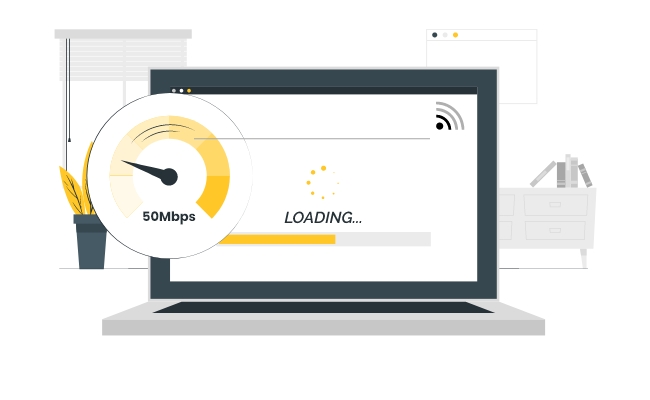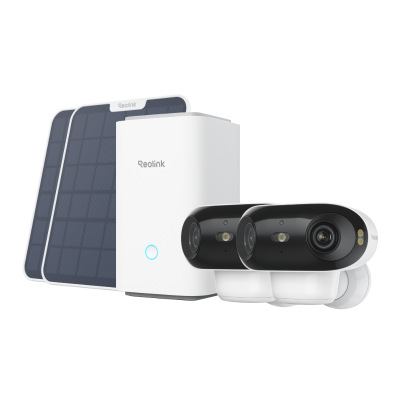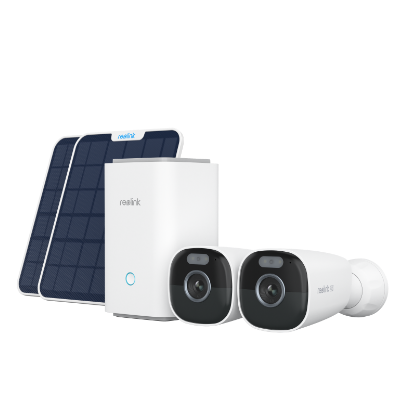What is Low Latency Meaning? Ultimate Guide

Low latency is one of the vital components of smooth online experiences. Be it gaming, streaming, or trading, low latency ensures data travels quickly between devices and servers.
In this article, we will cover low latency meaning, its relevance, and how to maintain it. We will also discuss low latency requirements and add a few tips about low latency for security camera systems.
What is Low Latency Meaning?
Low latency refers to the minimal delay between the sending and receiving of data over a network. In simpler terms, it's the time it takes for data to travel from one point to another.
Low latency internet or network means a fast and responsive connection with minimal delays. Similarly, low latency mode meaning often refers to settings in applications or devices that prioritize reducing delays for a smoother experience.
Why You Need Low Latency?
Low latency is extremely important in all operations requiring real-time interaction. High latency would result in lag time, which is clearly undesirable and disturbing. In low latency gaming, even a fraction of a second can shift the game from winning to losing.
High latency will cause awkward pauses or lag. This means that your video call may make for an uncomfortable experience with awful audio.
Low latency ensures speedy data transportation, thus delivering a seamless user experience where everything works highly efficiently.
Who Relies on Low Latency?
Several industries and activities depend on low latency for optimal performance:
Online Gaming:
Gamers depend upon low latency, such as 100 milliseconds or lower, to allow for the rapidly fading sequence of events between themselves and the game world. A delay of just a few milliseconds could make all the difference between winning and losing at a level. Competitive gaming, in particular, sees low latency as a must-have standard for professional gamers and esports athletes.
Telecommunications:
Low latency is crucial for clear and uninterrupted communication in telecommunications, including notifications, audio and video calls. Businesses that depend on video conferencing for meetings and cooperation may find high latency to be especially problematic as it can result in delays and poor call quality. Any latency lower than 150 milliseconds is fine.
Video Live Streaming:
Streamers need low latency to provide real-time interaction with their audience. High latency can lead to buffering and a disjointed viewing experience. Platforms like Twitch and YouTube prioritize low latency to keep viewers engaged and ensure smooth streaming. For this purpose, a 1-3 seconds latency can also work, but it should not be more than that.
Real-Time Monitoring:
Low latency is required for real-time monitoring of data relevant to industries like healthcare and security. Delays may compromise safety and decision-making. In the arena of healthcare, low latency is paramount for remote surgeries and patient monitoring systems.
AR/VR Applications:
Augmented and virtual reality applications require low latency to provide immersive experiences. High latency can cause motion sickness and break immersion. Companies developing AR/VR technologies invest heavily in reducing latency to enhance user experiences. For an immersive experience, the latency should be lower than 20 milliseconds.
Web Browsing:
Fast-loading websites depend on low latency to provide quick access to information. High latency can lead to slow page loads and a poor user experience. E-commerce sites particularly benefit from low latency to ensure smooth transactions and customer satisfaction.
Financial Trading:
Traders depend on low latency to quickly execute trades. Delays can lead to missed opportunities and hence financial losses. High-frequency trading firms spend a fortune on low latency networks, seeing it as an opportunity to compete in the trading game. Ideally, it should be in microseconds.
How to Maintain Low Latency?
Achieving low latency involves optimizing hardware, software, and networking. To maintain low latency, numerous relevant strategies can be followed:
Use a High-Speed Internet Connection
A fast and reliable internet connection is essential for low latency. Fiber-optic connections typically offer lower latency compared to traditional broadband. Ensure your internet service provider (ISP) offers a plan with high bandwidth and low latency.
Optimize Network Settings
Optimizing low latency through router and network settings would be a good idea here. Quality of Service (QoS) settings can let network traffic be managed and delays be reduced. Prioritize traffic to applications that require low latency in real-time, for example: gaming or conferencing.
Upgrade Hardware
Updating your devices and networking tools is a must. The newer routers and network adapters are therefore better for low latency. Consider a router supporting the latest standard Wi-Fi 6, reducing latency and improving performance.
Use Wired Connections
Wired connections generally offer lower latency compared to Wi-Fi. For activities like gaming and streaming, consider using an Ethernet cable. This reduces the potential for interference and provides a more stable connection.
Choose the Right Server
When playing, select online servers that are closer to your geographical location. This will reduce latency as the data will have to travel less distance. Many online games and streaming platforms give you the choice to select the preferred server location.
Monitor Network Performance
Regularly check your network's performance using tools like ping tests. Identify and address any issues that could be causing high latency. Tools like PingPlotter or Wireshark can help you diagnose network issues and optimize performance.
Optimize Application Settings
Many applications have settings that can help reduce latency. For example, in gaming, you can adjust graphics settings to reduce the load on your system and improve performance. In video conferencing, you can lower the resolution to reduce bandwidth usage and latency.
Bonus: Low Latency Security Camera System Recommendation
For those looking to enhance their security with low latency systems, consider the following options:
Home Hub with Argus 4 Pro
Home Hub with Argus 4 Pro is a 4K UHD Wi-Fi 6 security camera system that ensures low latency. The Argus 4 Pro is a smart 4K ColorX dual-lens solar/battery-powered camera. With 4K UHD resolution and a 180° panorama view, it provides a blindspot-free view, ensuring comprehensive coverage.
The ColorX vision technology delivers clear and colored footage both day and night. The camera offers 30% more battery life and is automatically charged through the solar panels. The Home Hub comes with a 64GB microSD card, which is a secure local storage without any monthly fee. You can also expand the system to up to 8 security cameras.
4K UHD Wi-Fi 6 Security System with 180° Blindspot-Free View
ColorX Night Vision, 1 Year of Local Storage, Exclusive Anti-Theft Algorithms, 180° Blindspot-Free Coverage, Expandable System Up to 8 Reolink Cams.
Home Hub with Argus Eco Ultra
Home Hub with Argus Eco Ultra is a wireless security system that includes two Argus Eco Ultra security cameras, two solar panels, and a Home Hub. It's a system that offers low latency, ensuring High-definition live view and playback. It has one year of local storage with anti-theft algorithms.
Argus Eco Ultra is a Wi-Fi solar/battery-powered standalone camera. It offers 4K color footage daily and night, ensuring rich details and clarity. The Home Hub records your videos even in offline mode and works as a reliable alarm center. You can also operate it through Alexa or Google Assistant.
Wireless Security System with 4K Wi-Fi Solar/Battery Standalone Camera Without Monthly Fees
4K Color Footage Day & Night, 1 Year of Local Storage, Exclusive Anti-Theft Algorithms, 360° All-Around Coverage, Expandable System Up to 8 Reolink Cams.
FAQs
What is ultra low latency meaning?
Ultra low latency meaning refers to an extremely minimal delay in data transmission. It's crucial for applications requiring real-time interaction, such as live streaming and gaming.
Which is better, 40 ms latency or 50 ms latency?
A 40 ms latency is better than a 50 ms latency, indicating a faster response time. Lower latency ensures quicker data transmission and a smoother experience.
Is low latency good?
Yes, low latency is good as it ensures quick and efficient data transmission. It's essential for activities like gaming, streaming, and real-time communication.
Conclusion
Low latency is essential to contemporary technology since it guarantees rapid and effective data transfer. Many activities, including financial trading and gaming, depend on minimal latency for best results. You could boost your online experiences by understanding low latency meaning and putting techniques in place to sustain it.
Search
Subscribe for the Latest Updates
Security insights & offers right into your inbox


